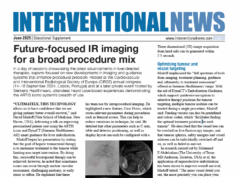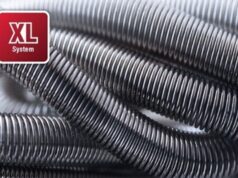
By Rahul S Patel and Richard Tapnio
Coils and plugs are among the most commonly employed tools for vessel sacrifice and aneurysmal occlusion. In practice, these tools must be catered to each individual patient as each case will bring unique challenges to the operator, say Rahul S Patel and Richard Tapnio, New York, USA.
With so many products on the market for use in transcatheter vascular embolization, the plethora of tools and techniques can create unnecessary stress and confusion for the interventionalist. Before starting any case, the interventional radiologist has to be familiar with the particular armament of tools at his or her disposal. We have outlined a few general tips and tricks to be considered.
Using the proper catheter
Before planning any embolization, it is important to choose your delivery platform to ensure the appropriate catheters and embolic materials are available in your inventory before the procedure. Fortunately, the large number of coils and plugs available allow for flexibility regardless of the type of catheter or microcatheter system being used for the case. Each type of microcoil has its own catheter size requirements, and checking to make sure that you have a compatible coil-catheter system preprocedure will avoid any unnecessary headaches during the procedure. When using vascular plugs, remember that Microvascular Plugs (MVP, Medtronic) are tailored for use in 0.021” to 0.027” microcatheter systems depending on size, while Amplatzer Vascular Plugs (AVP, St Jude Medical [under purchase by Abbott]) can be used within a 0.038” system for the AVP 4 or within a 5–9 French guide catheter for the AVP and AVP II depending on plug size.
Packing density
An important measure to keep in mind for embolizing aneurysms with microcoils is achieving sufficient packing density. The packing density of an aneurysm refers to the fraction of aneurysmal volume occupied by a deployed microcoil. While aneurysmal volume can be estimated using the ellipsoid volume equation (4π/3×L/2×W/2×H/2) and coil volume is estimated as (π×(D/2)2×L×10), packing density is simply defined as the number of coils, multiplied by coil volume over aneurysm volume. Online tools, such as AngioCalc (www.angiocalc.com), can facilitate these calculations. A packing density of less than 24% is associated with higher rates of coil compaction and recanalisation. In addition to coil size, it is important to keep coil softness in mind to prevent catheter kickout. Finally, while fibred microcoils do not add significant volume to packing density, hydrogel from coated hydrocoils (Terumo) expands within the aneurysm sac, resulting in increased filling of the aneurysm.
Cost-effectiveness
Given increasing scrutiny on procedural costs in both inpatient and outpatient settings, choosing the appropriate embolic agent can help to significantly reduce overall expenses. Estimated costs will depend on target size and indication for coil embolization, whether it be for aneurysm filling or vessel sacrifice. In addition, significant cost variability between microcoil systems can result in cost differences of several thousands of dollars for even small aneurysms. Check your inventory price list, and keep in mind that the cost of using a single vascular plug for vessel occlusion may be comparable to or even less than deployment of multiple microcoils.
Length is as important as width for plugs
If a vessel occlusion is planned with vascular plugs, remember that some of the devices will lengthen depending on how much the plug is oversized for the target vessel—in an inverse proportion to the diameter of the vessel. This factor is particularly important when embolizing a vessel with a short trunk length, such as the gastroduodenal artery. While plug elongation is only minimal (up to 2.2mm for an 8mm AVP 4 plug), this small difference may be critical in tight spaces. Finally, each of the vascular plugs has a unique occlusive zone. For example, while the AVP 4’s tapered bilobed shape results in a smaller central occlusive zone allowing for easier navigation, the AVP II has multiple large points of contact with the vessel wall, making the device more suitable for high-flow vessels.
Device sizing is specific to each coil and plug
Oversizing is an important concept in vascular embolization that helps ensure the plug or coil remains seated in the desired location without kickback. However, there is large variation in manufacturer-recommended device sizing among plugs and coils, from zero oversizing with Ruby (Penumbra) and Azur CX (Terumo) coils, to 10–20% oversizing with Interlock (Boston Scientific) and Concerto (Medtronic) coils, and 30–50% oversizing with AVP vascular plugs. Be sure to read each product’s brochure before deciding on which device size to employ in your case.
These five points should be reviewed before starting any vascular embolization case with plugs or coils. By becoming comfortable with a variety of devices and keeping these points in mind – you will minimise any unneeded stress while keeping costs to a minimum.
Rahul S Patel is an assistant professor, Radiology and Surgery, Mount Sinai, New York, USA. Richard Tapnio is a resident at Mount Sinai Beth Israel, New York, USA. The authors have reported no disclosures pertaining to this article.










